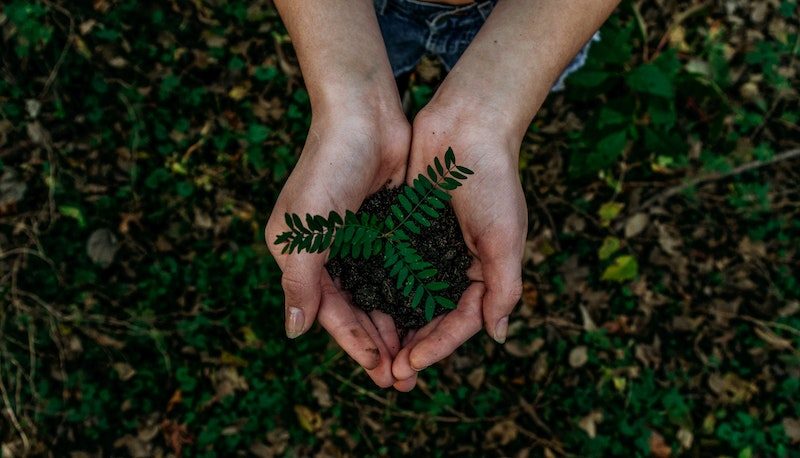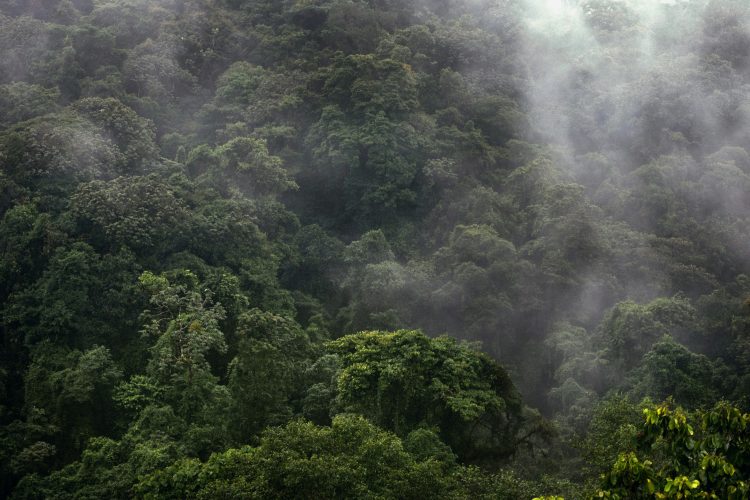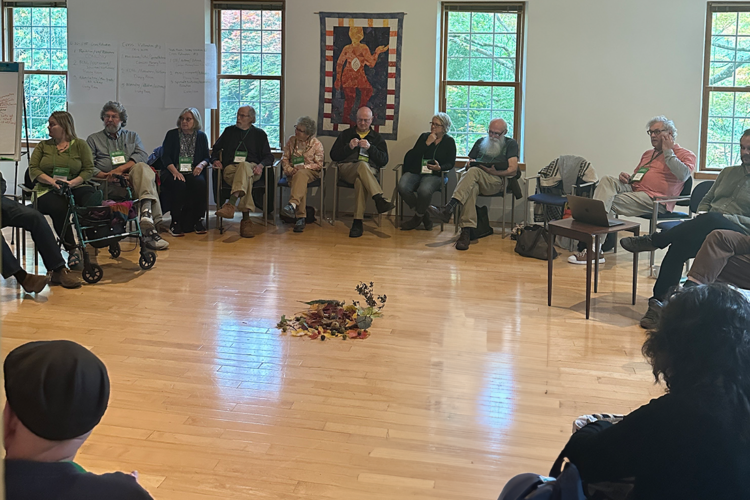Human-Induced Climate Change

By the QEW Sustainability: Faith & Action Working Group
What are the effects of human-induced climate change?
Human-induced climate change threatens to overarch all the human misuses of creation, including rapidly growing human population, habitat destruction, over-exploitation of resources, and introduction of invasive species. Human-induced climate change is the result of increased carbon dioxide (CO2) and other greenhouse gases released into the atmosphere from the burning of fossil fuels and agricultural activity since the beginning of the industrial age.
This increase in greenhouse gases (CO2, methane, and nitrous oxides) makes the air more reflective, trapping more heat inside the earth’s atmosphere. Carbon dioxide concentration has fluctuated over the past 700,000 years but had never been more than 300 parts per million (ppm) until global CO2 increased from 280 ppm to 379 ppm between 1750 and 2005. If no changes are made, the CO2 concentration is projected to be 600 ppm by 2050. Some studies have suggested that 450 ppm would be the tipping point, after which it will be much harder to reverse the warming trends.
Because all these human impacts combine with one another, their effects on climate change are compounded, making the prospects for the future difficult for all living creatures, including people. As a result of climate change, biodiversity loss is accelerating, extreme weather events are increasing, islands and coastal areas are being submerged, and resource conflicts are leading to additional human suffering and war.
Ten of the hottest years ever recorded occurred between 1992 and 2006. A warmer atmosphere evaporates water faster from oceans and land, increasing water vapor in the air. Climatic variability and anomalies, such as extreme rain and drought events, have increased. Warming has caused glaciers to recede and increased ground instability and melting of the permafrost in polar regions; warming is, and will be, greatest in polar regions. Ocean levels are rising, and as more land-based ice (mostly in polar regions) melts, more coastal shores will be eroded and inundated. In the Northern Hemisphere, spring seasons are earlier and some species are shifting their ranges northward or upward in elevation. Synchrony of ecological niches is altered, changing when food is available for many species. Many species will go extinct if their favorable climates no longer exist. The range of some tropical diseases is expanding. In some places climate changes may be beneficial to human endeavors, but in most, the changes will be very harmful.
Are there limits to resources?
Some people suppose that there are no limits to the resources of our precious planet. The Ecological Footprint allows us to compare human use of resources with what is available. It relates all human activities to a finite resource—land area. We use land to live and work, to grow food, to develop natural resources, and to dispose of waste. Waste includes carbon dioxide, and land is needed for living plants to absorb this greenhouse gas, the main culprit in global climate change.
How are we doing?
Given the population and consumption of 2003, for all humans to live sustainably on Earth there are about 4.4 acres of productive land and water available for each person. But on average each person is using resources equivalent to about 5.5 acres. This means that today it would take an additional one-fourth of a planet like Earth, borrowing from future generations and other species. Unfortunately, we do not have any spare planets! We need to take better care of the only one we have.
Average consumption has risen gradually since 1985, when our use of resources matched what was available. The world’s population has skyrocketed, however, from 4.8 to 6.6 billion people, in just the 22 years since 1985.
What can we do to slow global climate change? The increase in greenhouse gases is largely due to overuse of Earth’s resources. Quakers have traditionally lived simple lives. Simplicity is more important now than ever! It is essential to also recognize the effect of our growing population, and take steps to slow and stop that growth.
What can you do?
- Live a life in which you regularly practice discernment about your actions and purchases. Before buying something ask yourself, “Is this the best use of the world’s resources?” Find ways to simplify in all areas of your life, such as transportation, energy, food, consumption, housing, and recreation. Make room for more prayer.
- Seek ways to affect public policy—locally, nationally, and whole-Earthly. Use the FCNL alert e-mails to contact your national legislators, and be similarly active in your state. Write letters to the editor and get involved in your community.
The Creation is magnificent!
We are awed by its beauty. Underlying that beauty are intricate systems of inter-dependence among what might seem to be separate entities. The interconnectedness of Earth’s systems enables all our separate forms to come into being and to continue.
The climate crisis is a devastating assault on these systems, bringing rising sea levels, desertification around the globe, species extinction, and increasing conflict. Quakers must decide how best to respond.
Earthcare is a spiritual concern
A particular conflict may remind us of our peace testimony and of the importance of taking away the occasion for all war. The call to peace is general and eternal.
The climate crisis brings us to see the terrible results of living without a sense of Earth’s sacredness. As we discern how to deal with this particular global emergency we are discovering that care of the earth is central to our spiritual lives. Although Quaker tradition has not always emphasized it, we are called “to live in right relationship with all Creation, recognizing that the entire world is interconnected and is a manifestation of God” (from QEW’s Vision & Witness Statement). As with the call to peace, this call is general and eternal.
The climate crisis makes living our testimonies more difficult
- The disastrous fighting in Darfur actually began over a water dispute in that dry land. How can we have peace without care for the earth’s water?
- Rising sea levels will lead to the evacuation of tens of millions of people from islands and low-lying areas. How can we have equality when we are trying to find room for so many climate refugees?
- The unsustainable patterns of production and consumption that mark our way of life underlie the damage being done to the health of the earth. How can we practice simplicity when we are so accustomed to comfort and ease, and having whatever we want whenever we want it?
- If we do not speak truth to power and change the ways we live to correspond with the truths we hold dear, what happens to our integrity?
These four testimonies are not separate from one another. To be fully understood and lived, each requires the others. Earthcare is of a piece with these traditional testimonies.
How can we come into a fuller understanding of who we are and what our place is in the community of life? It is time to take the matter of Earthcare into our hearts, with full awareness of its importance in our spiritual life. It is time to pray about it and discern together what each—and all—of us are called to do.
Resources
- The best way to quantify the effect of humans on the natural world is the Ecological Footprint: www.ecofoot.net.
- Read Ed Dreby’s Quaker Eco-Bulletin article (5:5) concerning climate change at: www.quakerearthcare.org/Publications/QuakerEco-bulletin/QEB_Archive/index.htm.
- FCNL has an expanded website relevant to Earthcare and legislation: www.fcnl.org.
- For factual information about human-induced climate change, check out the United Nations Intergovernmental Panel on Climate Change: www.ipcc.ch/.
- The Union of Concerned Scientists also has information: www.ucsusa.org/global_warming/science/global-warming-faq.html.
- “The double-headed risk: Climate change and armed conflict,” really makes the connection between climate change and war: www.international-alert.org/climate_change.php>.
- Interfaith Power & Light (Regeneration Project): www.theregenerationproject.org.
Al Gore’s new book, The Assault on Reason, (New York: Penguin Press, 2007) has a chapter on “The Carbon Crisis” that is a good call to action on behalf of Earth’s climate. For information about the science of global warming and possible actions to address the climate crisis, go to the website for Al Gore’s An Inconvenient Truth, www.climatecrisis.org

